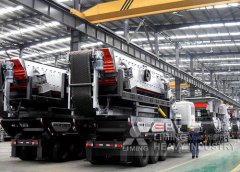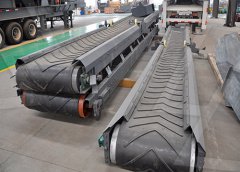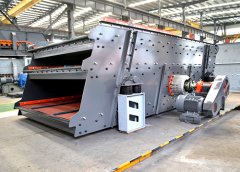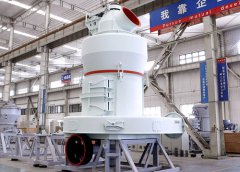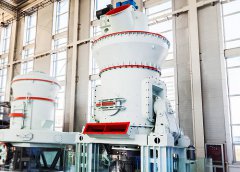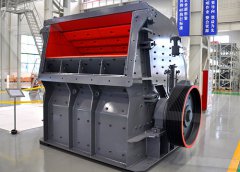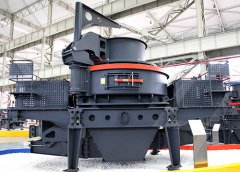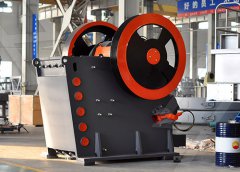
Calcium carbonate dissolution patterns in the ocean
Calcium carbonate (CaCO3) minerals secreted by marine organisms are abundant in the ocean. These particles settle and the majority dissolves in deeper waters or at the seafloor.Ocean acidification and calcium carbonate saturation states in the coastal zone of the West Antarctic Peninsula 1. Introduction. The rapid increase of Ocean acidification and calcium carbonate saturation
احصل على السعر
Effect of calcium carbonate saturation of seawater on
The saturation of seawater with respect to calcium carbonate (calcite and aragonite) is defined as the ratio of the ion activity product to the stoichiometric solubility Aragonite saturation state is commonly used to track ocean acidification because it is a measure of carbonate ion concentration. Aragonite is one of Ocean Acidification: Saturation State Science On a Sphere
احصل على السعر
Why are Surface Ocean pH and CaCO3 Saturation State
As two most important metrics for ocean acidification (OA), both pH and calcium carbonate mineral saturation states (Ω) respond sensitively to anthropogenic Uncoupling of calcification from calcifier biomass could accelerate coral reef degradation under the combined impact of warming and ocean acidification, Ocean warming and acidification uncouple calcification
احصل على السعر
The role of calcification in carbonate compensation
44 Citations 21 Altmetric Metrics Abstract The long-term recovery of the oceans from present and past acidification is possible due to neutralization by the Abstract Deep oceanic circulation regulates seafloor calcium carbonate (CaCO3) accumulation by transporting atmospheric carbon dioxide (CO2) to depth and Effects of Deep Circulation on CaCO3 Dissolution and
احصل على السعر
Pelagic calcium carbonate production and shallow dissolution in
Introduction The marine calcium carbonate (CaCO 3) cycle is a key component of the global carbon cycle, and is intimately related to atmospheric CO 2 (ref. organic matter to the deep ocean, potentially leading to the deepening of the oxygen minimum zones,[8] but it also provided a sedimentary layer of calcium Calcium Carbonate Dissolution from the Laboratory to the Ocean
احصل على السعر
Carbonate Compensation Depth SpringerLink
Carbonate Compensation Depth, Fig. 1. A schematic showing the relationship between the saturation horizon, lysocline, and carbonate compensation depth (CCD) in the ocean. The location of the three levels varies by location as a result of differences in CaCO 3 production at the surface and the degree of undersaturation at depth.K sp is equal to the product of calcium and carbonate ion at saturation (Ω = 1), and is sensitive to pressure, temperature, salinity and other factors. The sensitivity to pressure is particularly strong, leading to a large difference between surface (∼0.43 × 10 −6 mol 2 kg −2 at 10 m, for calcite) and deep (∼1.15 × 10 −6 mol 2 kg −2 at 5000 m, for Calcium carbonate cycling in future oceans and its influence on
احصل على السعر
Carbonate compensation depth
The carbonate compensation depth (CCD) is the depth, in the oceans, at which the rate of supply of calcium carbonates matches the rate of solvation.That is, solvation 'compensates' supply. Below the CCD solvation is faster, so that carbonate particles dissolve and the carbonate shells of animals are not preserved.Carbonate particles Ocean uptake of anthropogenic CO2 reduces pH and saturation state of calcium carbonate materials of seawater, which could reduce the calcification rate of some marine organisms, triggering aSimulated effect of calcification feedback on atmospheric CO2 and ocean
احصل على السعر
Covering Ocean Acidification: Chemistry and Considerations
As a result, calcium and carbonate are released into the ocean and, in the past, these releases counteracted acidification. However, weathering takes thousands of years. Because surface oceans are supersaturated the calcium carbonate saturation state is greater than one (Ω >1.0) conditions favor mineral formation.Deep oceanic circulation regulates seafloor calcium carbonate (CaCO 3) accumulation by transporting atmospheric carbon dioxide (CO 2) to depth and then transferring it, with respired CO 2, along the global ocean conveyor belt.This creates the shallowing trend of CaCO 3 preservation from the Atlantic to the Pacific Oceans. The Effects of Deep Circulation on CaCO3 Dissolution and
احصل على السعر
Pelagic calcium carbonate production and shallow dissolution in
The marine calcium carbonate (CaCO 3) cycle is a key component of the global carbon cycle, and is intimately related to atmospheric CO 2 (ref. 1).The formation of CaCO 3 in the ocean is a processCalcium carbonate formation is the primary pathway by which carbon is returned from the ocean–atmosphere system to the solid Earth1,2. The removal of dissolved inorganic carbon from seawater byThe evolution of the marine carbonate factory Nature
احصل على السعر
Calcium carbonate saturation in the surface water of the Arctic Ocean
Abstract. In the summer of 2005, we sampled surface water and measured pH and total alkalinity (A T) underway aboard IB Oden along the Northwest Passage from Cape Farewell (South Greenland) to the Chukchi Sea. We investigated the variability of carbonate system parameters, focusing particularly on carbonate concentration [CO 3 2−] and calcium [1] Ocean acidification is predicted to occur first in polar oceans. We investigated the saturation state of waters with respect to calcite (Ω cal) and aragonite (Ω arg) in six sections along an Arctic outflow pathway through the Canadian Arctic Archipelago (CAA) and into the northwestern Atlantic using dissolved inorganic carbon and total Calcium carbonate saturation states in the waters of the
احصل على السعر
Two Decades of Ocean Acidification in the Surface Waters of
Anthropogenic CO 2 absorbed by the ocean results in decreases in pH and the calcium carbonate saturation state of seawater (Ω). This is ocean acidification (OA). In the Arctic Ocean, the most susceptible region in the world to OA, melting sea ice and anthropogenic CO 2 absorption promote both OA and the decline of Ω. This study Thus, it forms bicarbonate instead of calcium carbonates. Under-saturation of the mineral affects the organisms’ ability to produce and maintain This billion-dollar economy is severely damaged by ocean acidification. Decreased calcium carbonate levels are limiting the development of coral exoskeleton and warm waters are Ocean acidification & its lasting impacts Ocean Acidification
احصل على السعر
Emergent constraint on Arctic Ocean acidification in the Nature
The ongoing uptake of anthropogenic carbon by the ocean leads to ocean acidification, a process that results in a reduction in pH and in the saturation state of biogenic calcium carbonate mineralsOcean acidification and calcium carbonate saturation states in the coastal zone of the West Antarctic Peninsula. Deep-Sea Research II,139,10.1016/j.dsr2.2017.01.007 . Google ScholarCalcium carbonate saturation states along the West Antarctic
احصل على السعر
Ocean Acidification, Effects on Calcification SpringerLink
Calcium carbonate production thus releases CO 2 to the water column while its dissolution removes CO 2.. The calcium carbonate saturation state (Ω) is a measure of the ion activity product of Ca 2+ and CO 3 2− relative to the apparent solubility product (K′) for a particular calcium carbonate mineral (e.g., calcite or aragonite). The surface ocean is of this uncertainty by introducing a dependence of calcium carbonate (CaCO3) production on calcite saturation state ( CaCO3) in an intermediate complexity coupled carbon-climate model. In a series of model simulations, we examine the impact of several variants of this dependence on global ocean carbon cycling between 1800 and 3500 under two dif-Calcium carbonate production response to future ocean
احصل على السعر
WHFKQLTXH IOPscience
Detecting the calcium carbonate saturation state under the stress of ocean acidification using saturometry technique Tingting Shi1, Ying Wang1, Yidong Zhao1,3 and Socratis Loucaides2 1 Tianjin Research Institute for Water Transport Engineering, M.O.T., Tianjin, China; 2 Ocean and Earth Science, National Oceanography Centre A procedure and a nomogram are presented for the determination of the calcium carbonate saturation of seawater at in situ pressures. This procedure was applied to data from the eastern South Pacific Ocean, and results show that these waters are generally undersaturated below the first few hundred meters.CALCIUM CARBONATE SATURATION IN THE OCEAN
احصل على السعر
[PDF] Calcium carbonate saturation states along the West
Ocean acidi fi cation and calcium carbonate saturation states in the coastal zone of the West Antarctic Peninsula. The polar oceans are particularly vulnerable to ocean acidification; the lowering of seawater pH and carbonate mineral saturation states due to uptake of atmospheric carbon dioxide (CO2). High.From April 2011 to January 2012, seasonal variation of the aragonite saturation state (Ωar) was observed for the first time in Tokyo Bay, in order to understand the current state of ocean acidification in a highly eutrophicated bay in Japan. Ωar in the bay ranged between 1.55 and 5.12, much greater than observed in offshore waters. At the Calcium carbonate saturation and ocean acidification in Tokyo
احصل على السعر
